From Machair To Munro (Part Two)
Part Two
Will Copestake
Another day staring at the little red arrow; my confidence in the bearing was conflicted with an ever present concern of corniced cliffs and avalanches, which could appear without warning. Wiping ice from my goggles, I checked my position. Every inch of skin was covered from the elements, my jacket felt brittle like cardboard, my toes were numb inside snowshoed boots; everything was plastered in a thick layer of snow. Eight hours of effort for a moment of satisfaction upon the summit, If only I could bloody find it! Searching for a trig point on the Cairngorm massif in total white out was like looking for a needle frozen in an ice rink. I extracted my GPS. Somewhere buried in snow beneath my feet was the summit. Good enough!
The winter of 2013 was unusual. The north American polar vortex had interacted with a meteorological phenomenon known as ‘The Ebdon effect’. This meant that while America was enduring its coldest winter on record, the UK was being battered with severe Atlantic depressions. England was flooding, Scotland was trying to blow away. When I planned the trip I had vowed never to climb in winds above 60mph. After months of continuous gales this was now normal walking, 90mph now promoted to the new ‘risky’ limit. A hole worn into each knee of my waterproof trousers served reminder that above 110mph it is physically impossible to stand up. I had promised myself never to crawl off a summit again.
As one depression rolled into another, there was a brief and glorious window; just one or two days of crystal clear skies, lower winds and spectacular winter panoramas. In the short winter light, those days had begun and ended in the dark; the summits at sunrise and sunset re-kindling the love of the hills and silencing the little voice whispering: ‘why go up and see nothing?’
In the short winter light, those days had begun and ended in the dark; the summits at sunrise and sunset re-kindling the love of the hills and silencing the little voice whispering: ‘why go up and see nothing?’
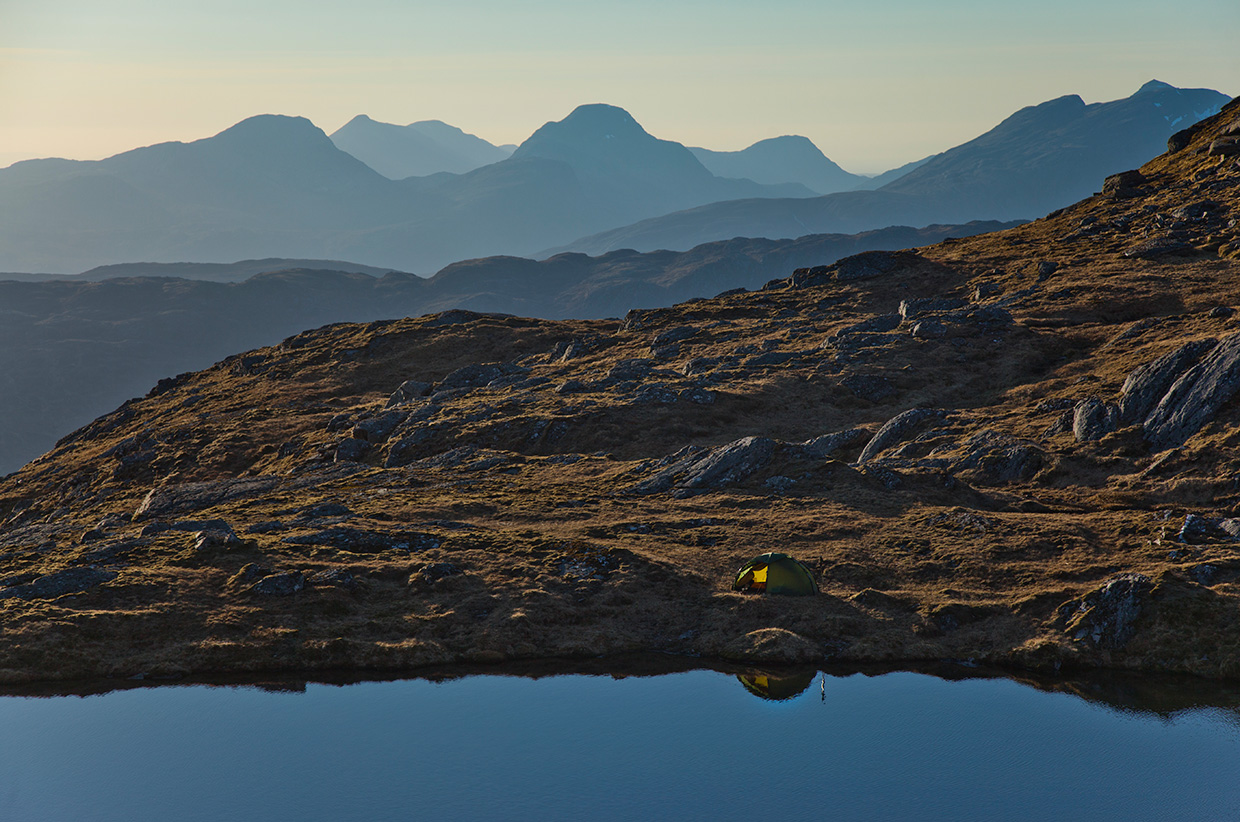
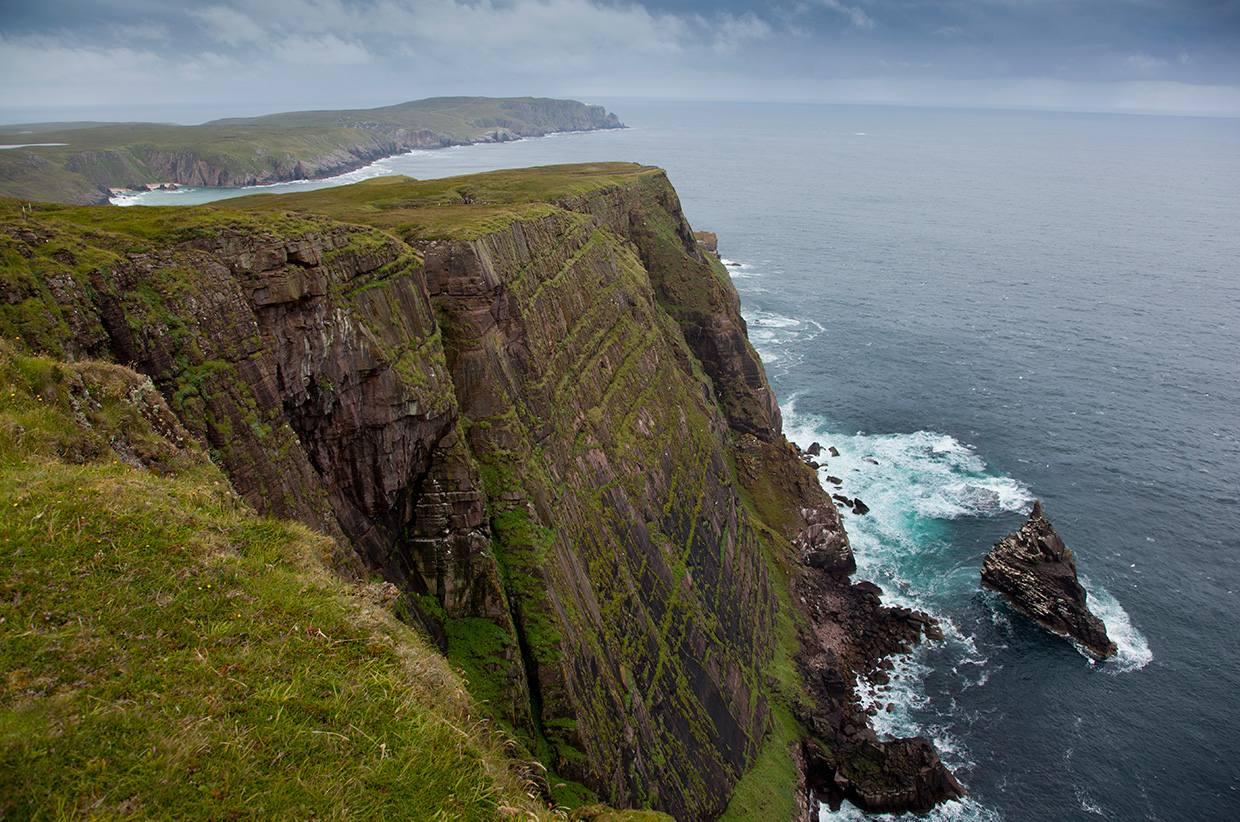
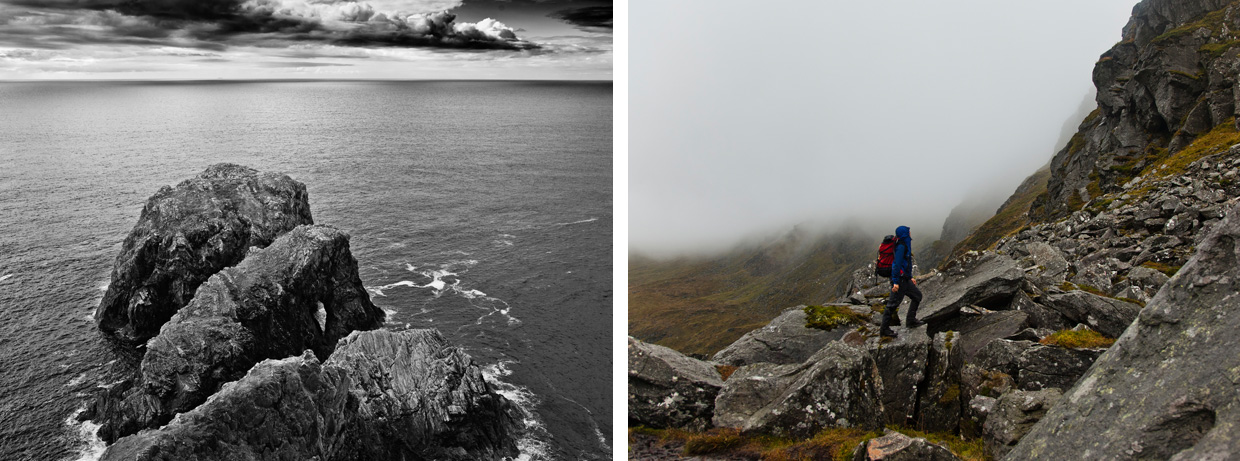

The bothy culture is one to make any stranger a friend, as many nights of laughter are often forgotten in the dregs of whiskey than spent alone warming to an open fire.
Although I loved my bike, when it came to how it worked I was – and still am – a total novice. When I initially began the route, I had to first unwrap the pannier bags, let alone learn to fit and fill them. I could change a tyre but the rest seemed like witchcraft. Unsurprisingly – after removing the seventh link of a broken chain and relinquishing to buy a new one – I had to replace the gears with it as they were worn to shark-fin-like hooks after just 1500km. As the parts broke I slowly learnt how to fix them, with much appreciated help from friends and strangers met along the way.
There are over 5500 people who have climbed the Munro mountains. Named after Hugh Munro, they have become the basis of a Scottish hiking cult known as ‘Baggers’. With only a few exceptions they are achievable without any technical climbing, their hardest challenge being navigation and exposure management. By the early days of November, exposure was my biggest concern; the daily collapsing of a wet tent meant an average of two or three nights nights before my sleeping bag also became damp. To dry out kit and soul, I ventured into sheltering in cheap bunk houses once or twice a week. Once on the west coast I could swap those houses with bothies; open, often remote Scottish houses available to hikers. The bothy culture is one to make any stranger a friend, as many nights of laughter are often forgotten in the dregs of whiskey than spent alone warming to an open fire.
As spring brought improvements in the weather, the snow froze into ice rinks. Travel became fast and under the satisfying crunch of axe and crampon relatively painless. I had found a rhythm over the end of winter, each day’s mood, be it high or low, reflecting the weather. For the first time the end became a sight on the horizon.


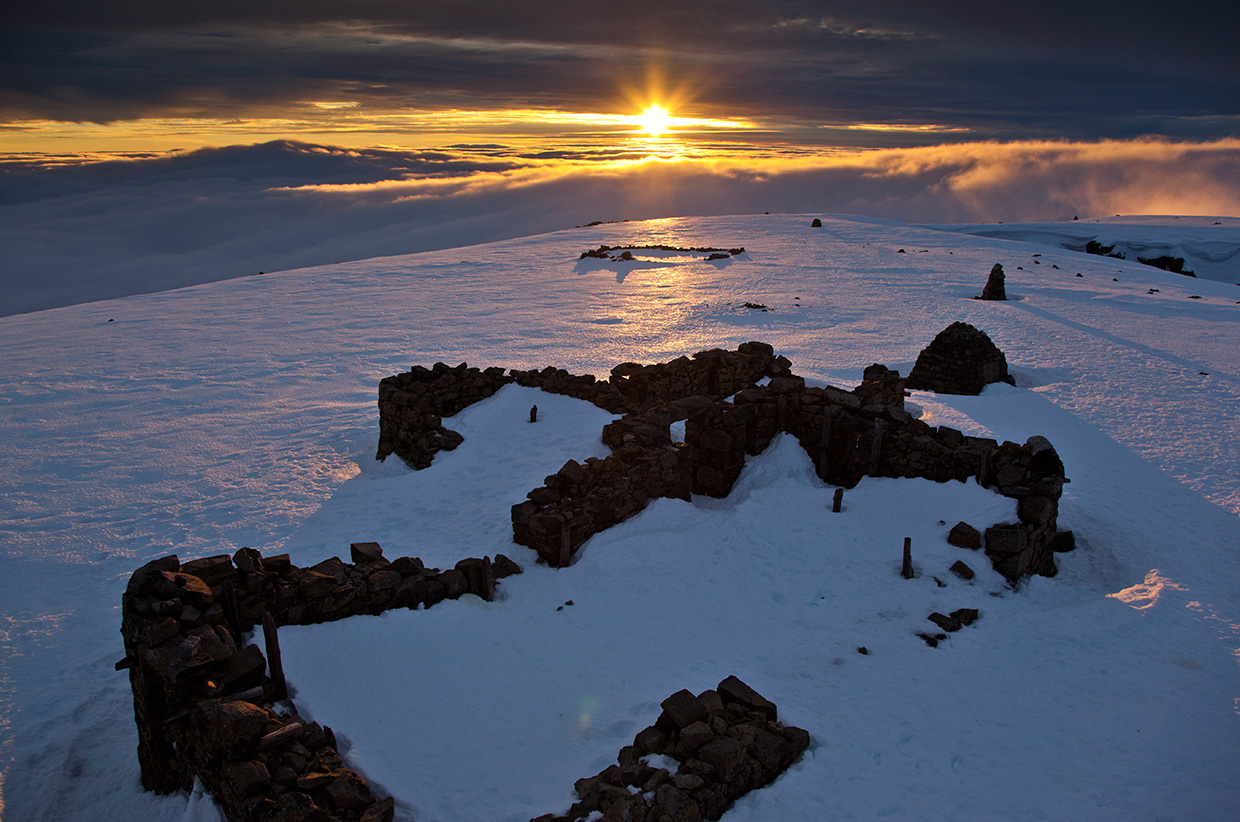
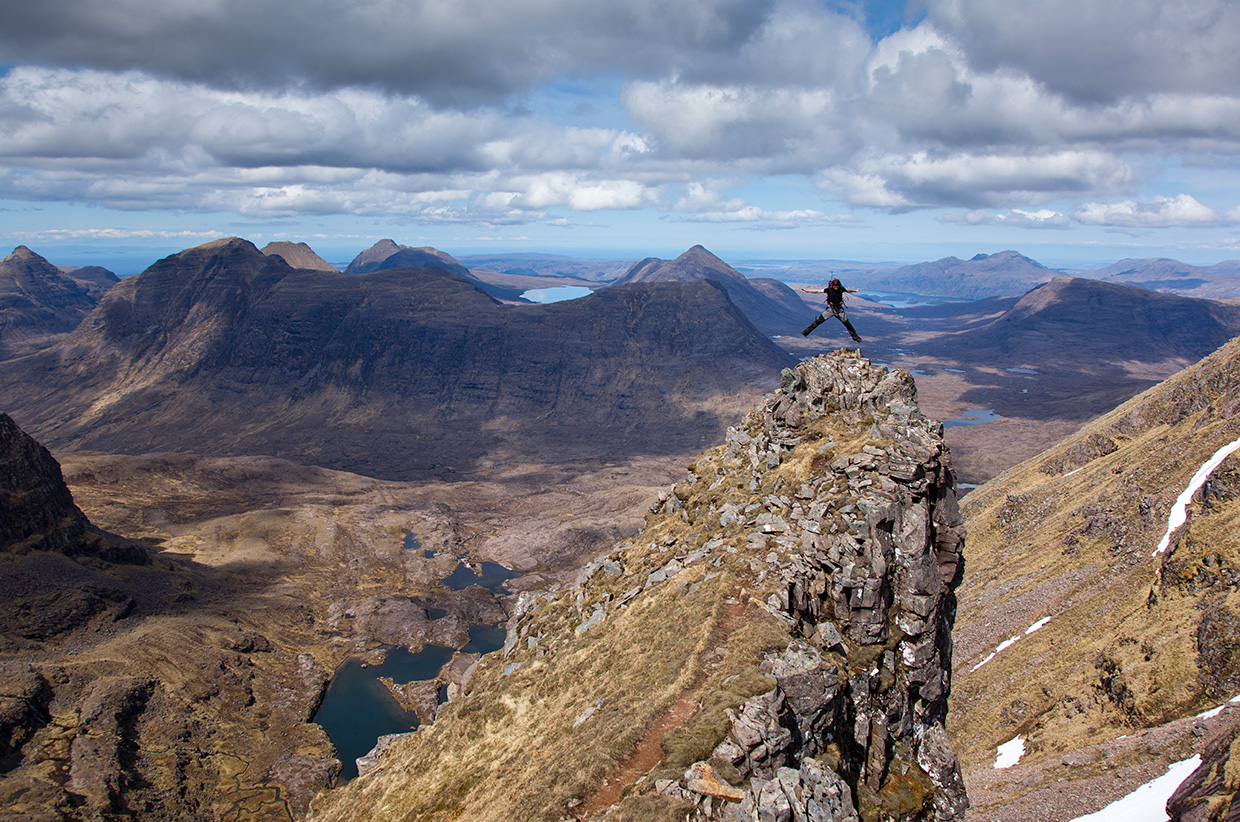
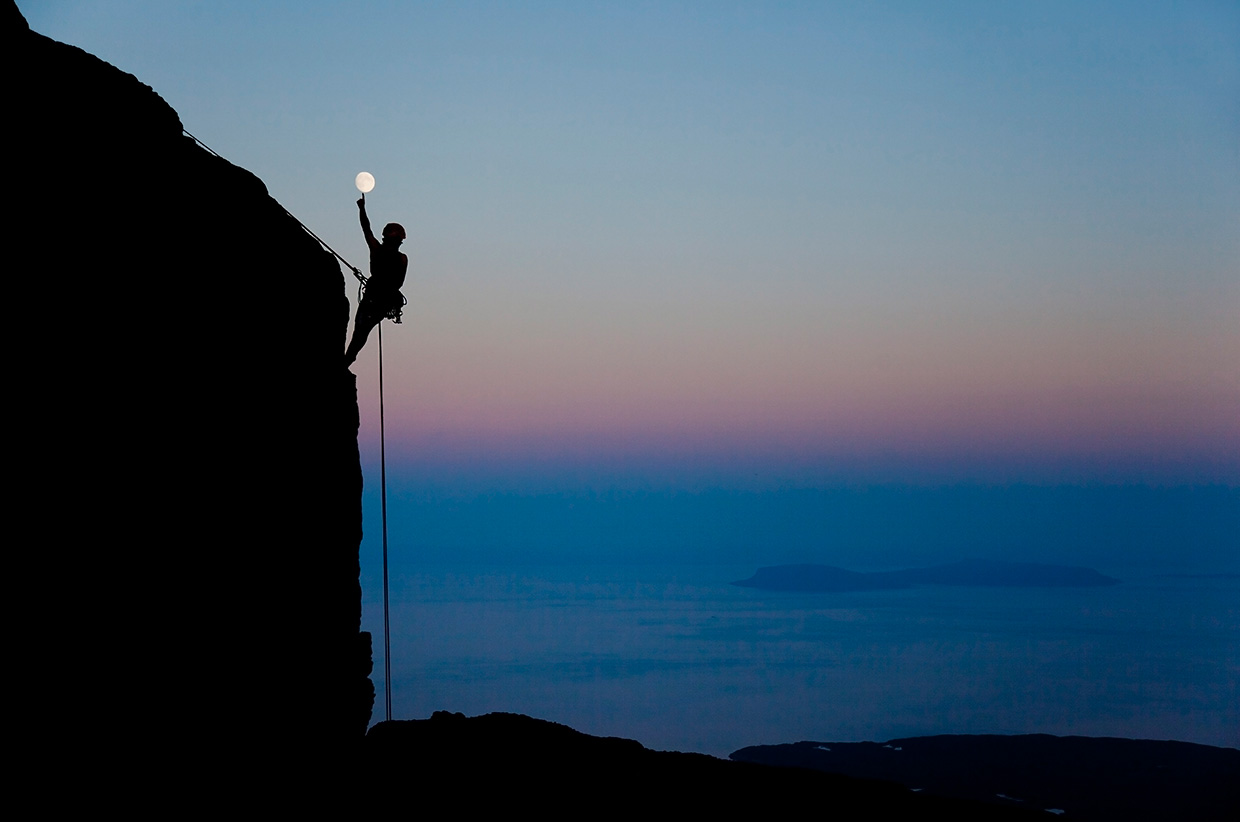

So, now that I am back at home I’m left with the same question with which everything began: ‘What is it to be Scottish?’ In the light of the upcoming independence debate it is a topic much discussed and one which I have often been asked about. So much of this country is defined by its rugged landscapes and famously unforgiving climate. Living outside, through the seasons, traveling a route resembling a spider’s web across the nation I still feel that I have only just skimmed the surface of Scotland. But I think now that the real meaning of being Scottish is voiced, not in the iconic shouts of ‘Freeedom’ from the mountainsides, but more so in the quiet unassuming welcome of its people and their eagerness to turn a stranger into a friend, with the cry ‘come on in, the kettle’s on’.
Read Part One of Will’s journey – circumnavigating Scotland’s coastline by sea kayak
Read Will’s account of crossing Iceland on foot – from its southern most corner to its northern most tip.

Will Copestake grew up in Ullapool on north west Scotland. After a childhood exploring the local coast, gorges and hills he took his love of adventure to New Zealand. During a 10 month gap year he hiked the famous ‘Great walks’ and discovered a passion in the outdoors. Upon returning to Scotland to begin a degree in Environmental Science and Outdoor Education at Stirling Will and friend Remi McMurtry hiked across Iceland from south to north.
Aged 22 years old Will circumnavigated Scotland solo by sea kayak before cycling back home to Ullapool via a winter ascent of the 282 Scottish mountains above 3000ft known as the Munros. Now 23 Will is following his passions in photography, writing and the outdoors.
Website: www.willcopestakemedia.com
Facebook: WillCopestakeMedia
Twitter: @WillCopestake





